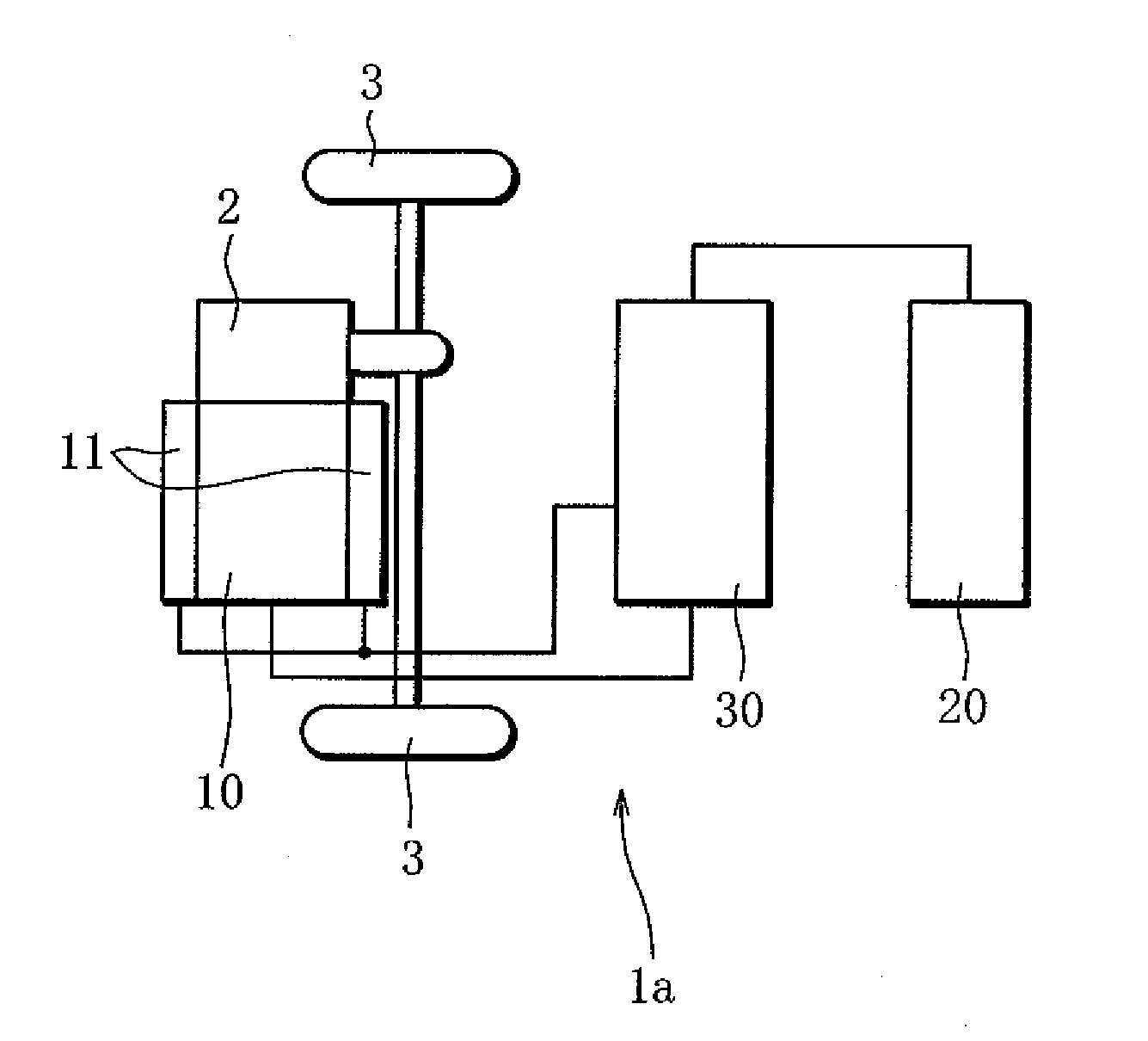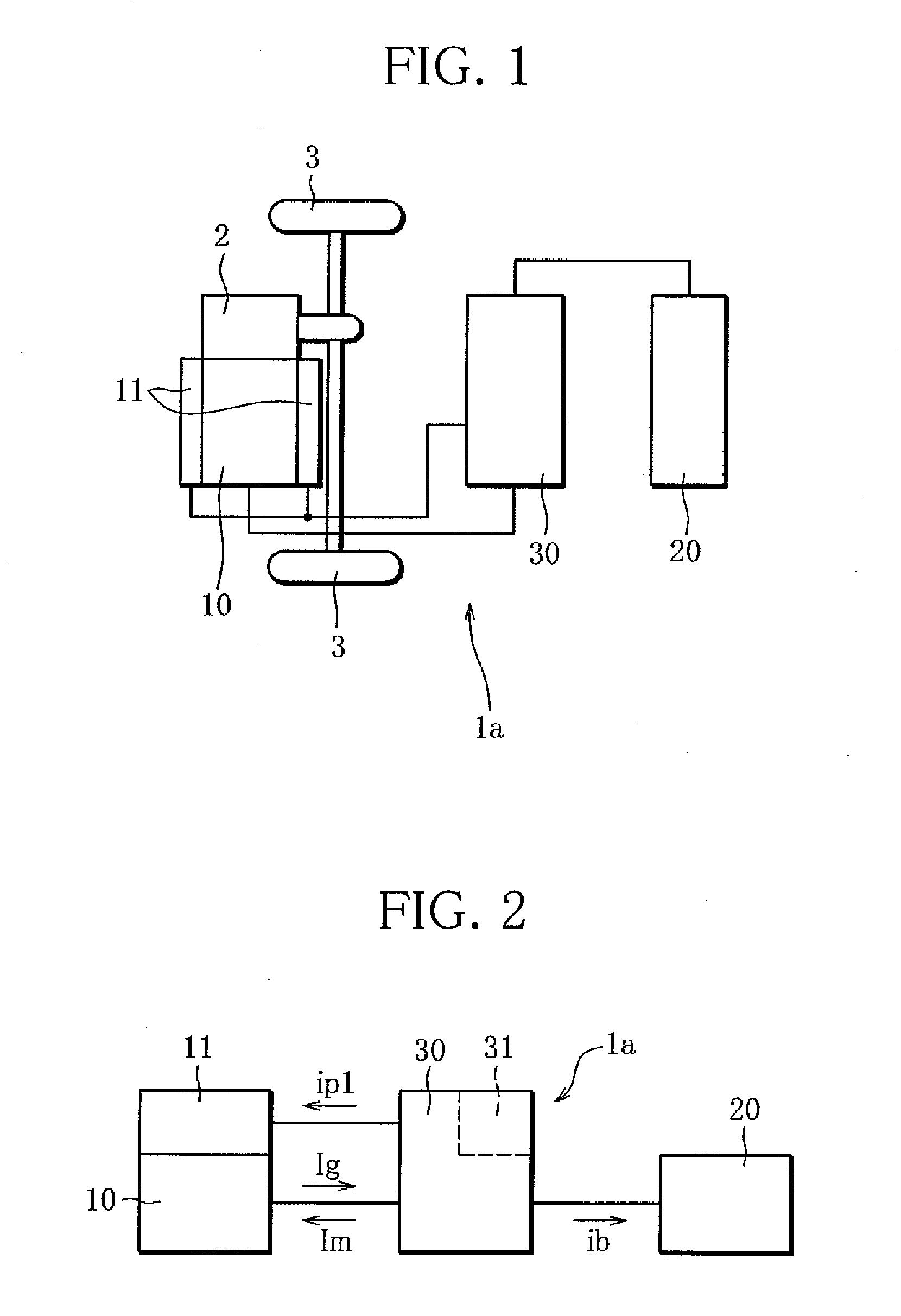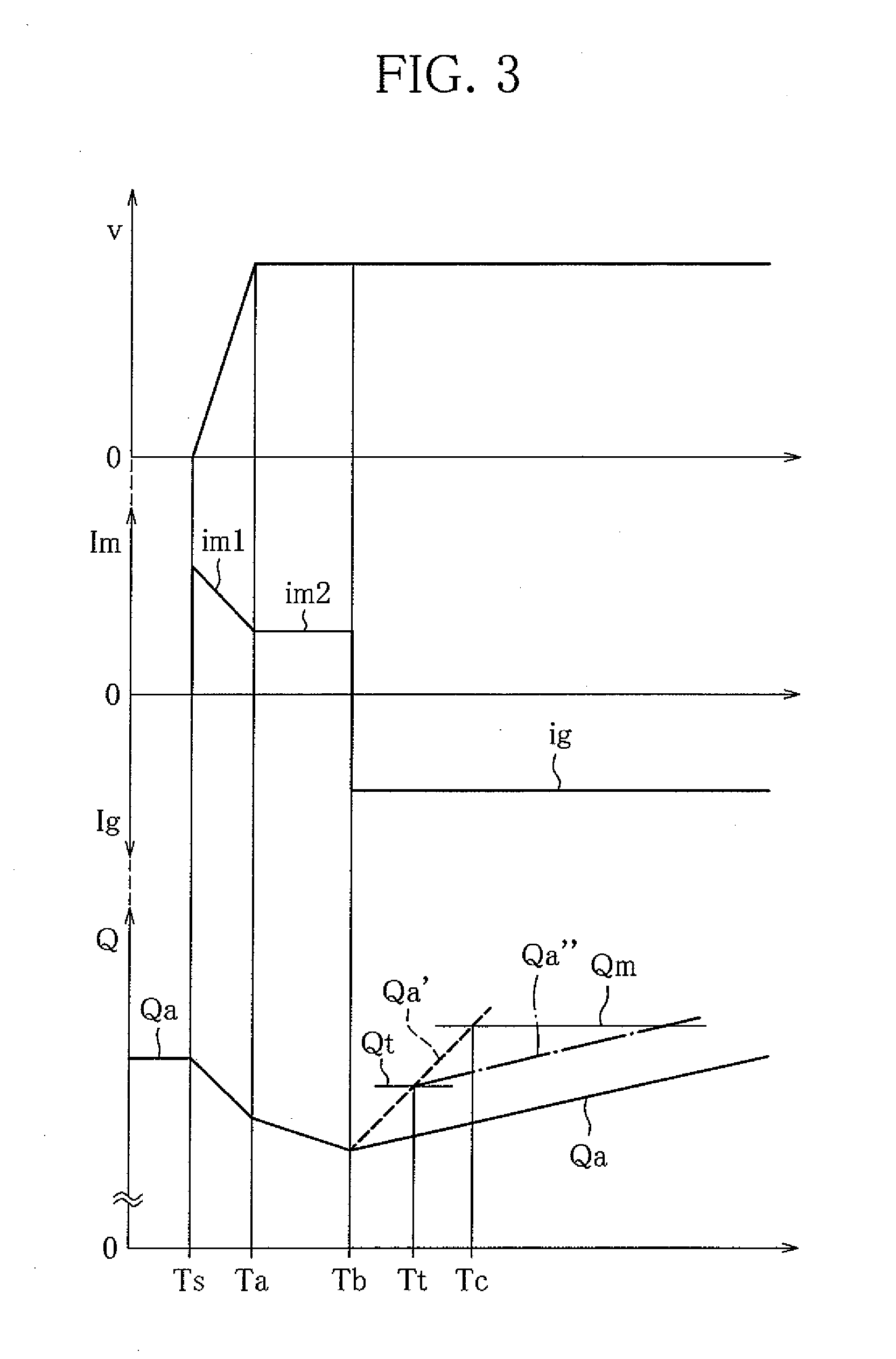Vehicle Propulsion Device
a propulsion device and vehicle technology, applied in the direction of motor/generator/converter stopper, dynamo-electric converter control, lighting and heating apparatus, etc., can solve the problems of fuel consumption improvement, electric power consumption drop, etc., to reduce the temperature rise reduce the increase of the loss of copper and iron of the motor generator, and charge quickly
- Summary
- Abstract
- Description
- Claims
- Application Information
AI Technical Summary
Benefits of technology
Problems solved by technology
Method used
Image
Examples
first embodiment
[0029]A vehicle propulsion device la according to the invention will be described below with reference to FIGS. 1 to 3. FIG. 1 is a schematic configuration view showing the propulsion device 1a. FIG. 2 is a block diagram for explaining the operation of the propulsion device 1a. FIG. 3 is a graph showing temporal changes in vehicle speed v, motor generator current, and quantity of electricity Q stored in a battery, when the propulsion device la is in operation.
[0030]The propulsion device la has a motor generator 10, a first thermoelectric conversion element 11 that is thermally connected to the motor generator 10, a battery 20, and a power control unit 30 (hereinafter, referred to as “PCU 30”). The PCU 30 detects an operation condition of a vehicle, and controls the sending and receiving of electric current (or electric power) of the motor generator 10, the first thermoelectric conversion element 11 and the battery 20. A transmission 2 is coupled to an output shaft of the motor gener...
second embodiment
[0055]The temporal change of the quantity of electricity Q in FIG. 8 is shown in comparison with that of the In FIGS. 7 and 8, the electric current of the motor generator 10 is denoted by motor drive current Im in a plus region and by regenerated current Ig in a minus region. FIG. 7 shows current supply directions indicated by arrows. In FIG. 8, the electric current that flows out of a PCU 30 is positive current, whereas the electric current that flows into the PCU 30 is negative current.
[0056]As illustrated in FIG. 6, the propulsion device 1c of the third embodiment is different from the propulsion device 1b of the second embodiment in that the propulsion device 1c has a second thermoelectric conversion element 21 that is thermally connected with the battery 20 and functions as a thermoelectric generation element due to Seebeck effect. The propulsion device 1c is capable of recovering a portion of thermal energy generated by the charge / discharge of the battery 20 by using the seco...
PUM
 Login to View More
Login to View More Abstract
Description
Claims
Application Information
 Login to View More
Login to View More - R&D
- Intellectual Property
- Life Sciences
- Materials
- Tech Scout
- Unparalleled Data Quality
- Higher Quality Content
- 60% Fewer Hallucinations
Browse by: Latest US Patents, China's latest patents, Technical Efficacy Thesaurus, Application Domain, Technology Topic, Popular Technical Reports.
© 2025 PatSnap. All rights reserved.Legal|Privacy policy|Modern Slavery Act Transparency Statement|Sitemap|About US| Contact US: help@patsnap.com



